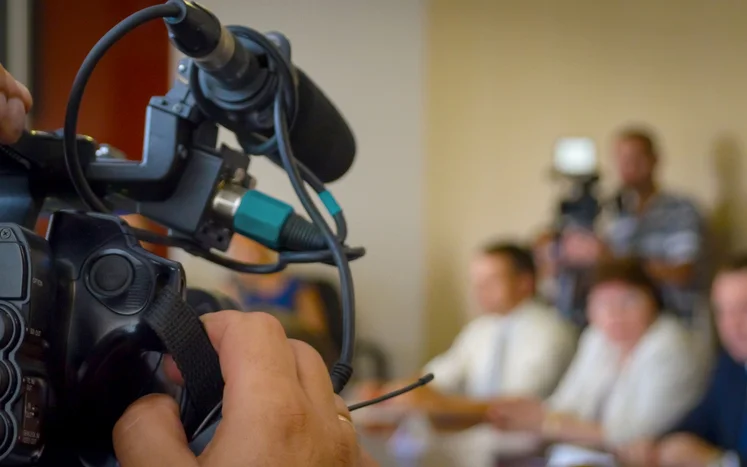Why Lawful Videography Is Crucial for Accurate Legal Record-Keeping
In the world of lawful proceedings, the precision of record-keeping is extremely important, and lawful videography becomes an important device in this context. By recording the subtleties of spoken and non-verbal communication, it significantly decreases the potential for false impression that can come with conventional written documents. The preservation of authentic aesthetic proof not just enhances the integrity of testaments but likewise contributes to a detailed account of events. As we discover the complex advantages of lawful videography, one should consider its effects for the future of judicial stability and openness.
Value of Visual Evidence
Establishing the significance of aesthetic evidence in lawful process is critical for making certain exact record-keeping and enhancing the general integrity of the judicial procedure. Aesthetic evidence serves as a vital tool in documenting events, conditions, and various other relevant details that may be necessary to a case. Unlike written accounts, which are susceptible to analysis and predisposition, visual recordings offer an objective, unalterable representation of realities as they took place.
This kind of evidence can capture a variety of elements, consisting of witness habits, environmental context, and physical evidence, every one of which might influence judicial outcomes. By presenting a clear and thorough aesthetic narrative, legal videography removes uncertainty and helps to preserve the credibility of the evidence.
Moreover, aesthetic proof can be important in reducing disagreements over accurate discrepancies, as it permits a straight comparison against testimony and other recorded documents. In an era where digital innovation is significantly widespread, the capability to existing aesthetic evidence successfully can dramatically improve the overall top quality of legal procedures. Ultimately, the consolidation of visual proof not just boosts the documentation procedure but additionally strengthens public rely on the judicial system by promoting openness and accountability.
Enhancing Testament Reputation
The integration of lawful videography into court process considerably boosts the reliability of witness testament. By capturing the nuances of spoken and non-verbal interaction, video recordings supply an even more extensive representation of a witness's behavior, feelings, and reliability. This visual paperwork permits jurors to observe the witness's body language, facial expressions, and general comportment, which are vital parts that can affect their perception of statement integrity.

Furthermore, the presence of video clip footage can deter witnesses from supplying deceptive or overstated declarations, as they know that their testament is being videotaped. This responsibility reinforces the honesty of the judicial procedure. Ultimately, lawful videography acts as an important tool in making certain that witness statement is not only precisely portrayed yet likewise viewed with enhanced integrity by all celebrations entailed.
Comprehensive Record Conservation
Comprehensive record conservation is crucial for maintaining the honesty of legal process. Legal videography works as an important tool in this procedure, providing an exact visual and auditory account of testaments, depositions, and other zero hours in an instance. Unlike conventional written records, video recordings catch the subtleties of body language, tone, and feeling, which are vital for comprehending the context and intent behind declarations made during legal process.
Incorporating audiovisual aspects into record-keeping boosts the preservation of evidence, making sure that it continues to be intact and easily accessible throughout the lawful process. This is particularly crucial in instances where the reliability of witness statements might be tested, as aesthetic recordings can substantiate insurance claims and supply quality. Additionally, video records can be very useful throughout appeals or retrials, providing an unchanged depiction of the initial testimony.

Furthermore, the ability to evaluate video evidence allows lawyers to recognize essential information that might have been forgotten in composed records. By keeping a comprehensive archive of legal proceedings via videography, law practice can promote the highest possible criteria of precision and responsibility, eventually contributing to a fairer judicial process.
Improving Legal Process
Improving lawful proceedings is essential for boosting performance and lowering hold-ups within the judicial system. Legal videography serves as a crucial device in accomplishing this objective by offering clear and accurate aesthetic paperwork of court hearings, depositions, and testimonies - legal videography. This technology enables real-time recording, making sure that all verbal and non-verbal signs are recorded, which can help with quicker resolution of disputes
The assimilation of videography into legal procedures reduces reliance on standard techniques, such as lengthy records, which can be time-consuming to generate and examine. By having accessibility to tape-recorded footage, lawyers can swiftly reference crucial moments, boosting their capability to prepare and existing situations effectively. This immediacy additionally helps in the making clear of statements, reducing the capacity for misconception.

Admissibility in Court
Exact paperwork is vital not just for efficiency yet likewise for making certain that proof is admissible in court. Legal videography offers as an essential tool in this procedure, providing a reliable visual document of testimonies, declarations, and events.
To be deemed acceptable, lawful videography should stick to recognized procedures, such as correct tools use, appropriate illumination, and clear sound capture. Additionally, it is necessary to have qualified videographers who understand the legal needs bordering evidence collection. legal videography. The chain of wardship need to additionally be maintained to avoid any claims of tampering or modification
In addition, legal videography can enhance the persuasiveness of evidence by offering jurors with a direct sight of the testament, permitting a more engaged understanding of the situation. In recap, the assimilation of lawful videography right into record-keeping not only supports efficiency however likewise strengthens the honesty and admissibility of proof in court process.
Conclusion
Finally, legal videography plays a critical function in making certain exact lawful record-keeping by giving unbiased aesthetic documents. This method enhances the credibility of statements, protects detailed documents, and enhances lawful procedures. Furthermore, the admissibility of premium video proof in court more emphasizes its value. Inevitably, the consolidation of legal videography into the learn this here now judicial procedure advertises transparency and reinforces public rely on the integrity of the lawful system.